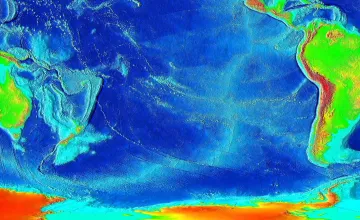AAU universities conduct a majority of the federally funded university research that contributes to our economic competitiveness, health and well-being, and national security. AAU universities are growing our economy through invention and innovation while preparing the next generation of scientists and engineers for global leadership. By moving research into the marketplace AAU universities are helping to create jobs, and provide society with new medicines and technologies.

UMD geologists uncovered evidence of a section of seafloor that sank into the Earth's mantle when dinosaurs roamed the Earth; it's located off the west coast of South America in a zone known as the East Pacific Rise.

Novel research supported by NCI could lead to more specific predictive disease models

A new University of Kansas study reveals parents seeking health care information for their children trust AI more than health care professionals when the author is unknown, and parents rate AI generated text as credible, moral and trustworthy.

Hypertension and amyloid plaques can separately cause dementia. Having both increases a person’s odds of developing cognitive decline, a new study finds
Explore More: University Research
You can filter stories by the university.
Researchers found that trees and soils on the outermost edge of forests may have a role in fighting climate change—but the benefits might not last
A team led by scientists at the University of Washington and special agents with the U.S. Department of Homeland Security has used genetic testing of ivory shipments seized by law enforcement to uncover the international criminal networks behind ivory trafficking out of Africa.
In a scientific first, researchers at the University of California, Irvine have discovered fundamental mechanisms by which the hippocampus region of the brain organizes memories into sequences and how this can be used to plan future behavior.
A new description of two well-preserved ancient plant fossils in Washington state is prompting paleobotanists to rethink how plants might have been dispersed during the Late Cretaceous, between 66 million and 100 million years ago.
Researchers at the Yale School of Public Health were able to accurately predict COVID-19 outbreaks in Connecticut municipalities using anonymous location information from mobile devices, according to a new study published in Science Advances.
